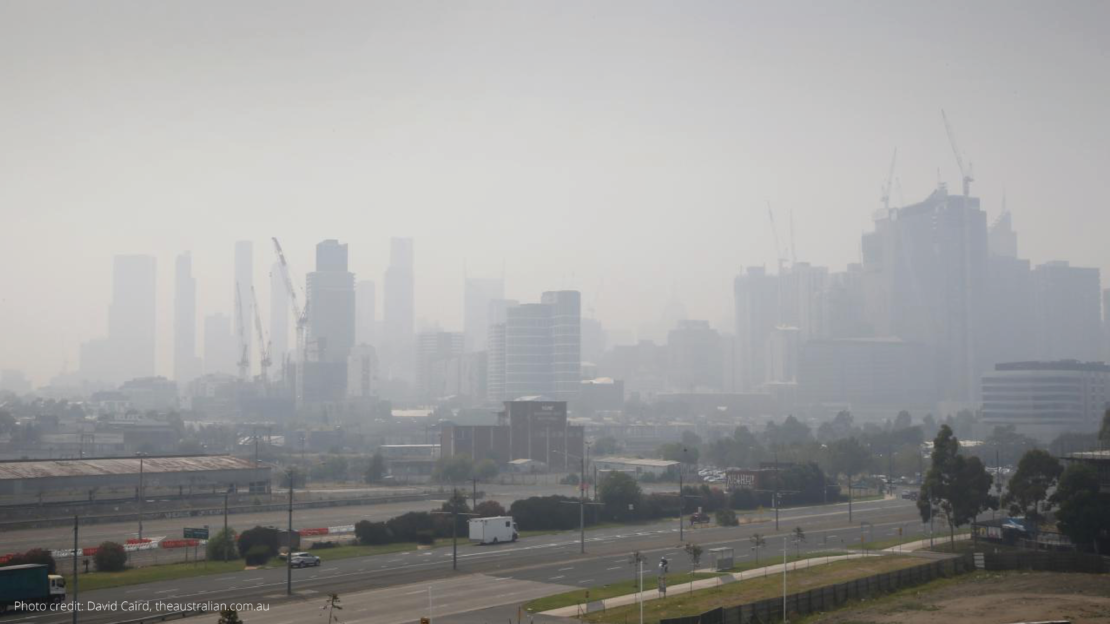Bushfires and Pollution: What you need to know
Our country often experiences catastrophic fires, it is therefore important that we ensure we stay aware and protected against factors that could potentially impact our health. As a result of our recent and at present continuing bushfires, a smoke haze has been affecting the air quality for millions of people across our country; for people in New South Wales, Canberra, and Victoria especially.
In December, some Sydney suburbs endured air quality more than 10 times the hazardous amount, and recently, the air quality in Canberra reached over 22 times the hazardous rating. The smoke from these bushfires irritates the respiratory system, containing fine particles that can travel into the lungs, causing irritation and damage. Some of us are more vulnerable than others. Children under the age of 14, older people, pregnant women, and those with pre-existing heart or lung problems are the most at risk, but there are also people in the community who have undiagnosed respiratory diseases who also may be at risk. Medical professionals have stressed concern for a small group of people who appear healthy, but may have undiagnosed and unmedicated asthma.
Bushfire smoke is made up of large atmospheric particulate matter from burning debris, as well as toxic gasses such as carbon monoxide, burnt solvents, plastics, paint etc.
Anyone who develops breathlessness, hoarseness or wheeziness, chest tightness, headache, or a persistent cough, is encouraged to go to their GP. In extreme cases, people may experience confusion, fainting or seizure.
Borrowing someone else’s inhaler or using over-the-counter Ventolin is not recommended. People with sensitivities to smoke are advised to be extra careful when air quality is poor. This means that it’s important to follow your medical plan, if you have a heart or lung condition, and to ensure you always have access to your medication or inhaler.
Pregnant women have for many years been warned that exposure to air pollution during pregnancy has been linked to adverse health effects such as increased rates of preterm birth, decreased birth weight, etc, seek medical advice.
How can you reduce your risk? Simply, the best way to reduce your risk is to limit your exposure where possible:
- If there is smoke circulating the area you are in, but the fire or cause is not a danger, remain indoors and seal any points of entry.
- Avoid vigorous exercise outdoors when air quality is low
- Avoid smoke-filled areas where possible and stay indoors with air conditioning on recirculate mode.
- Air purifiers, high-quality air conditioners with filters, and being in a house with no air leaks are also great ways of protecting yourself
- It is also beneficial to reduce other sources of air pollution such as cooking with gas, burning candles or vacuum cleaning
- Put on a P2 or N95 mask – please note the mask will not provide the intended level of protection unless worn correctly. Please refer to the below instructions for guidance on fitting the mask.
Keep your family and loved ones safe and healthy by spreading awareness about these risk factors and how to stay safe by sharing this article!
For nation-wide advice about air quality, visit https://aqicn.org/map/australia/
For how to fit a p2 or N95 mask, visit https://www.health.qld.gov.au/clinical-practice/guidelines-procedures/diseases-infection/infection-prevention/transmission-precautions/p2n95-mask
